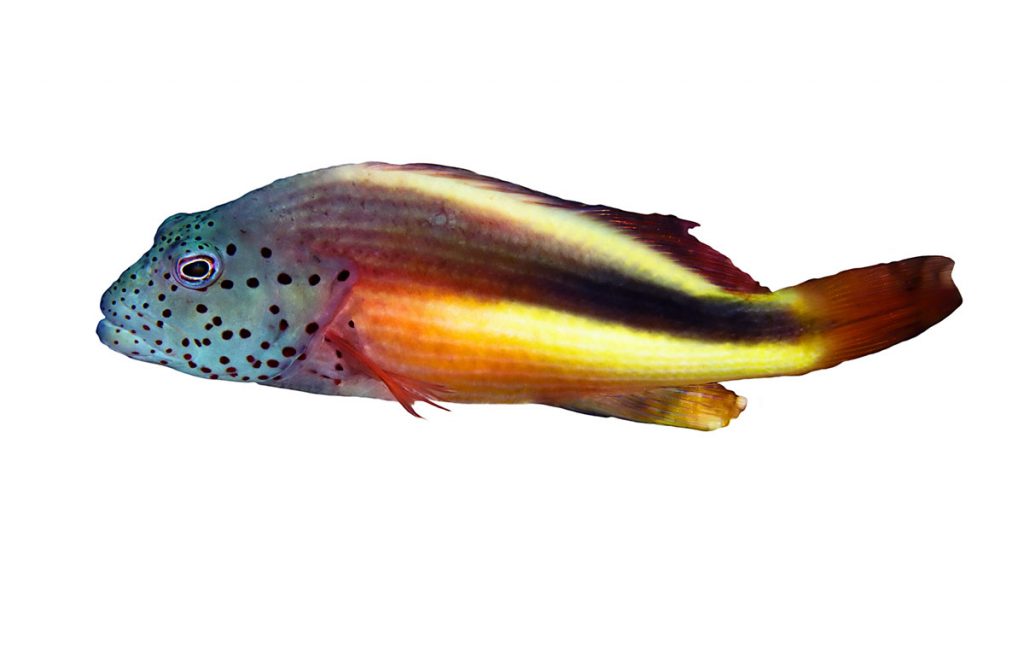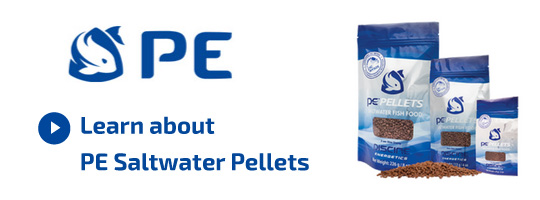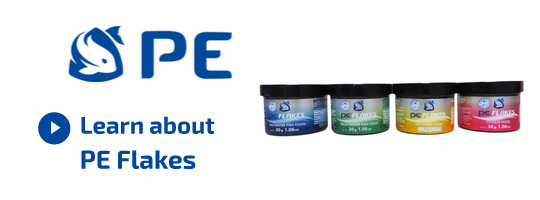Hawkfish Species
Hawkfish are members of the Cirrhitidae family, which contains approximately 12 genera. Hawkfish are a commonly kept group of fishes due to their bold personalities, relative ease of care and bright coloration.
The Flame Hawkfish (Neocirrhites armatus) is one of the most commonly available hawkfish species. Other species frequently sold in the aquarium hobby include the Longnose Hawkfish (Oxycirrhites typus), Falco Hawkfish (Cirrhitichthys falco) and the Arc Eye Hawkfish (Paracirrhitus arcuatus).
Biology
Hawkfish are found exclusively in the tropical Pacific and Atlantic Oceans. They can range in size from 2.5” (7 cm) to about 24” (60 cm), however most species mature on the smaller side of that range. The largest species, Giant Hawkfish (Cirrhitus rivulatus), is often caught for human consumption because of its large size.
Hawkfishes earned their name from their behavior of perching atop coral colonies, rocks and stinging hydrozoans to watch for passing prey items.
Captive Care
Hawkfishes can msaltake great aquarium inhabitants, provided their husbandry needs such as diet, water quality and tank space are met. They are known to be boisterous fish, so it may be advisable to keep hawkfish with species of similar size and temperaments.
Most hawkfish prefer a temperature range of 72F (22C) to 80F (26C). Hawkfish are generally considered reef safe as they will not harm corals, however they are known to consume small ornamental shrimps.
It is important to consider carefully what species of hawkfish may be best for your aquarium. While smaller species such as the Longnose Hawkfish (Oxycirrhites typus), are suited to tanks as small as 30 gallons, larger species such as the Giant Hawkfish (Cirrhitus rivulatus) will require a much larger aquarium.
Suggested Piscine Energetics Products
We suggest a diet based on Piscine Energetics Frozen Mysis, Piscine Energetics Frozen Calanus, Piscine Energetics Pellets (1mm, 2mm and 3mm) and Piscine Energetics Saltwater Flakes.
What People Say
After feeding my seahorses your mysis for about 3 months; they are fat and happy!!! they give me baby seahorses (at least 300 ) each 14 days... So I'm very satisfied of your mysis.The frozen mysis is about 70 per cent of their diet.
Yvan Charbonneau Quebec
I am keeping these Indian mudskippers -- very cute -- about 3-4 inches long. I've been feeding them frozen bloodworm, and decided to try them on mysis. I feed them in a "shallows" in the 150 I have set up for them. The minute the mysis hit the water they were on it, frozen and all. They gorged until their little bellies were almost bursting. I have yet to see an aquatic creature that does not go absolutely nuts over PE Mysis.






